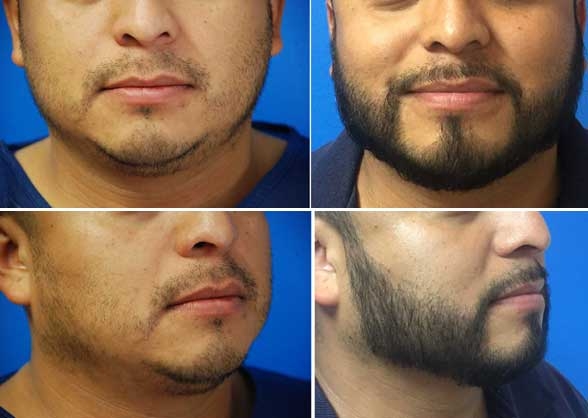BHT, or Body Hair Transplantation, is a hair restoration procedure that involves harvesting hair follicles from various parts of the body other than the scalp, such as the beard, chest, back, or other body areas, and transplanting them to the scalp or other regions that require hair restoration. This technique is particularly useful for individuals who have limited donor hair on the scalp or want to supplement their scalp hair with body hair for a more comprehensive restoration.
The BHT procedure is like traditional hair transplantation techniques, but with some differences in the harvesting process. Here's an overview of how a Body Hair Transplantation procedure is typically performed:
Consultation:
Before the procedure, you'll have a consultation with the surgeon to discuss your goals, assess the donor and recipient areas, and determine if BHT is a suitable option for you.
Donor Area Selection:
The surgeon will identify and mark the donor areas on the body from which hair follicles will be harvested. Common donor areas include the beard, chest, abdomen, legs, or back.
Anesthesia:
Local anesthesia is administered to both the donor and recipient areas to ensure that the procedure is painless.
Hair Follicle Harvesting:
The hair follicles are extracted from the donor area using the Follicular Unit Extraction (FUE) method. FUE hair restoration in Pakistan involves individually extracting follicular units (groups of 1-4 hairs) using a small, punch-like instrument. The surgeon makes tiny incisions around each follicular unit, and these are then extracted.
Graft Preparation:
The harvested hair follicles are carefully dissected and prepared for transplantation. The grafts are sorted and evaluated based on their size and quality.
Recipient Site Creation:
Tiny incisions are made in the recipient area (usually the scalp) where the hair is to be transplanted. The surgeon will create recipient sites in a way that mimics natural hair growth patterns.
Graft Transplantation:
The prepared hair follicles are then transplanted into the recipient sites. The surgeon pays attention to the angle, direction, and density of the transplanted hairs to achieve a natural appearance.
Postoperative Care:
Patients are provided with postoperative care instructions, including guidelines for cleaning the transplanted area and managing any potential discomfort.
As with any hair transplant procedure in Peshawar, the success of BHT depends on factors such as the surgeon's expertise, the quality of the donor hair, and the patient's individual characteristics. It's crucial to choose a skilled and experienced surgeon who can assess your specific situation and provide personalized recommendations. Keep in mind that results may take several months to become fully evident as the transplanted hair follicles go through their growth cycle.



